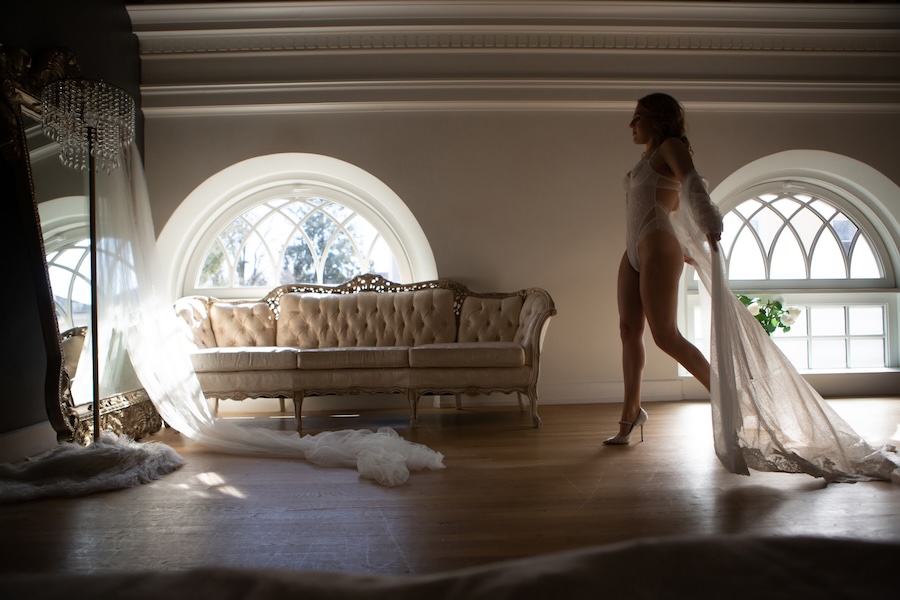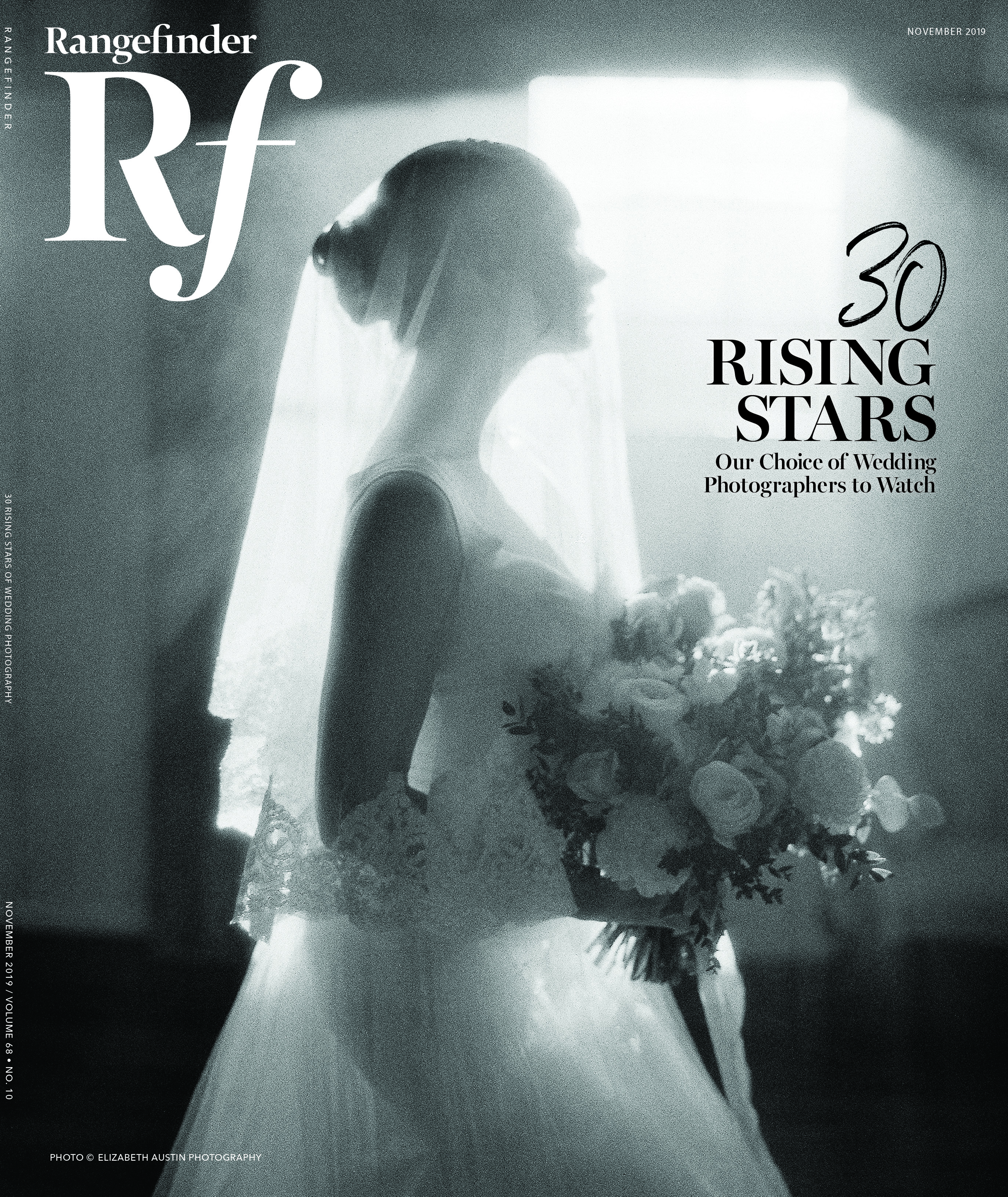Meditations in Silver
October 1, 2009
“It is my conviction that the earth and all its manifestations contain magic.”—Paul Caponigro
In a career spanning nearly 50 years, Paul Caponigro is regarded as one of America’s foremost master photographers, the quieter partner in the great Western talent triumvirate that includes Ansel Adams and Edward Weston. Acclaimed for his spiritually moving images, infused with the mystery of Stonehenge and other Celtic megaliths of England and Ireland, the sun-bleached desert landscapes in the American Southwest and the temples, shrines and sacred gardens of Japan, Caponigro also inspires viewers with glimpses of the deep, mystical woodlands of his native New England. “Photography is a medium, a language,” he wrote, “through which I might come to experience directly, live more closely with, the interaction between myself and nature.”
A jewel-like exhibition of 25 works were on view at the Santa Barbara Museum of Art from January–April, 2008, and provided a different and more intimate view of Caponigro’s “interaction between myself and nature.” “Meditations in Silver: Photographic Studies” by Paul Caponigro concentrates on still-life views crafted by an eye attuned lifelong to the small wonders of nature found in those artifacts spirited away from the sea, desert and forests to a personal cabinet of natural curiosities built over a period of 40 years. Coming full circle to the beginning of his first forays into nature, these images represent a departure from the spectacular, grand-scale views that claim immediate attention, and are quiet contemplations that reveal themselves over time.
Born in Boston in 1932, Caponigro attended public schools. He went on to study piano at Boston University before discovering photography in 1952. The following year he was drafted. Stationed in San Francisco, he worked as a photographer where he met and studied with Benjamin Chin. In the mid-1950s, he studied with Minor White in Rochester, NY, finding, in White’s teaching, both an inspiration and a challenge to pursue his own vision. For Caponigro this would mean not only refining his craft to its highest potential, but also learning to approach nature receptively, intending, in his own words, “to sense an emotional shape or grasp some inner visitation.” His first one-man exhibition at George Eastman House [in Rochester] followed, and he began teaching photography at Boston University and became a consultant for the Polaroid Corporation in the photo-research department. His first Guggenheim Foundation Fellowship in 1966 was the impetus for many years of travel abroad, particularly Ireland and England, where he was drawn to the great stone primitive creations there.
In 1992, following a debilitating automobile accident that exacerbated other health conditions and an abrupt move from the desert of New Mexico to the woods of Maine, the 61-year-old Caponigro found himself and his world knocked off its axis. While physical realities and events conspired to keep him from working—he could no longer manage the view camera he had worked with for years and his forays into nature—music sustained him, providing an unbroken connection to what had been the first artistic love in his life. Although he shifted from the piano to photography early in his career, he remained a dedicated pianist, believing his musical training and insight played an active role in his photographic imagery, where what he called the “visual silence” becomes as perceivable as sound. He described the greatest lesson ever taught to him by his piano teacher, the late Alfredo Fondacaro, as follows: “…that the effort, diligence, and care required in practicing must be quickly suspended when pressure coming from anxiety or a desire for fast results causes them to degenerate.” Looking at this body of work, the impact of this lesson on his life’s work becomes clear.
These still-life studies first began in 1999, after a seven-year hiatus from photography. Caponigro wrote, “Objects collected from nature started to wink at me. It was time for the many natural treasures I had collected to come to my rescue. I took to getting reacquainted with and arranging these fragments into new wholes.”
In working with these materials, he approached nature receptively, preferring to utilize an intuitive focus rather than merely arranging or recording forms and surface details. Clearing space and creating silence, the artist executed his photographic meditations within the confines of his airy home in the Maine woods. Caponigro was reminded of the efforts of the Japanese gardeners of Shinto shrines and Zen gardens who spent many patient hours seeking to “bring the essence of the natural world about them in their arrangement of moss, plants, sand and stone within select but limited spaces.” Caponigro continued, “It’s as if I’m an excavator, neither imagining nor trying to shape what I find, but allowing objects to reveal themselves… sometimes it’s difficult to know how deep the hole has to be, but you keep digging until you find the treasure chest.” And like an archaeologist, Caponigro knew that his purpose was neither to arrange nor to push, but rather to uncover and to understand. These still life compositions sometimes required several days to realize their final form.
The resulting gelatin silver prints created in the darkroom by the master himself, Caponigro belongs to the elite generation of fine art photographers who thrive in and inhabit the dark to capture the light radiating from finished works—read like personal elegies, a kind of memento mori, touching on the transience of all life. Caponigro’s technical genius is apparent in each image and is proof of his printing philosophy. His hope is that his viewers will allow the prints to speak for themselves: “Technique must serve and not dominate a craft, which requires creative movement. One might become aware of suggestions whispered by the interaction of tonalities within each print. It is a silent realm worth exploring. I often see the materials of photography as being a type of terrain. Emulsions, liquid developers, silver salts and fixers interact, and I construct a landscape that I need to first explore in my mind’s eye if I am to make it manifest as an artful image in silver.”
A lifelong gatherer of fragments and traces: humble seeds and shells, rocks and stones, leaves, fruits and flowers—Caponigro listened in silence and simply let the objects present themselves. “I found these natural fragments were not unlike the musical overtones one hears when the strings of a violin or piano are struck. As if to be visual vibrations or reverberations, they inspired and informed my emotions and brought the sense they were all mysteriously connected harmoniously to the whole from which they came.”
In “Cornucopia, 1999,” withered darkened leaves form a wreath around the rim of a dark bowl within which sculptural shells nest, creating a womb of white. With “Inner Night Sky, 1999,” (see below, left) the straight tall stalks of an unremarkable-looking flower are arranged in a patterned ceramic vase juxtaposed with a thin, transparent vase of roses. An abalone shell leans in, revealing its translucent core. In moments such as these, recorded by the photographer who waits in patient silence—is the essence of Caponigro’s quest, one that invites the viewer to share in his contemplation.
Images like “Nascent Flight, 2005,” (see pg. 174) a delicate compendium of birds’ nests, eggs, wings, feathers and reeds, and “Stone Voices, 2004,” (see pg. 28–29) a suite of pebbles and stones exploring infinite variations of gray, tells the viewer more about Caponigro’s judicious eye. In their studied simplicity they reveal his intuitive sense of balance. “At the root of creativity is an impulse to understand, to make sense of random and often unrelated details,” wrote Caponigro. “For me, photography provides an intersection of time, space, light and emotional stance. One needs to be still enough, observant enough, and aware enough to recognize the life of the materials, to be able to hear through the eyes.’ ”
Judith Turner-Yamamoto’s articles have appeared in Elle, The Boston Globe, Finnair, the Los Angeles Times, Travel & Leisure and Southern Accents, among others.



